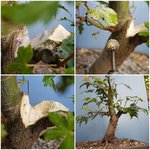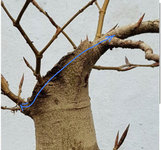leatherback
The Treedeemer
So.. I was wondering. Soon I will have to work on a 3? inch diameter chop on a beech. I intent to get this to close.
What I am now wondering.. For the final cut, what it the best shape to get a smooth transition once it heals. An angular cut, that much is clear. I however often see concave advertized. It feels that at that size, one would create a dimple and convex feels like it may create a smoother transition.
Any thoughts?
What I am now wondering.. For the final cut, what it the best shape to get a smooth transition once it heals. An angular cut, that much is clear. I however often see concave advertized. It feels that at that size, one would create a dimple and convex feels like it may create a smoother transition.
Any thoughts?




